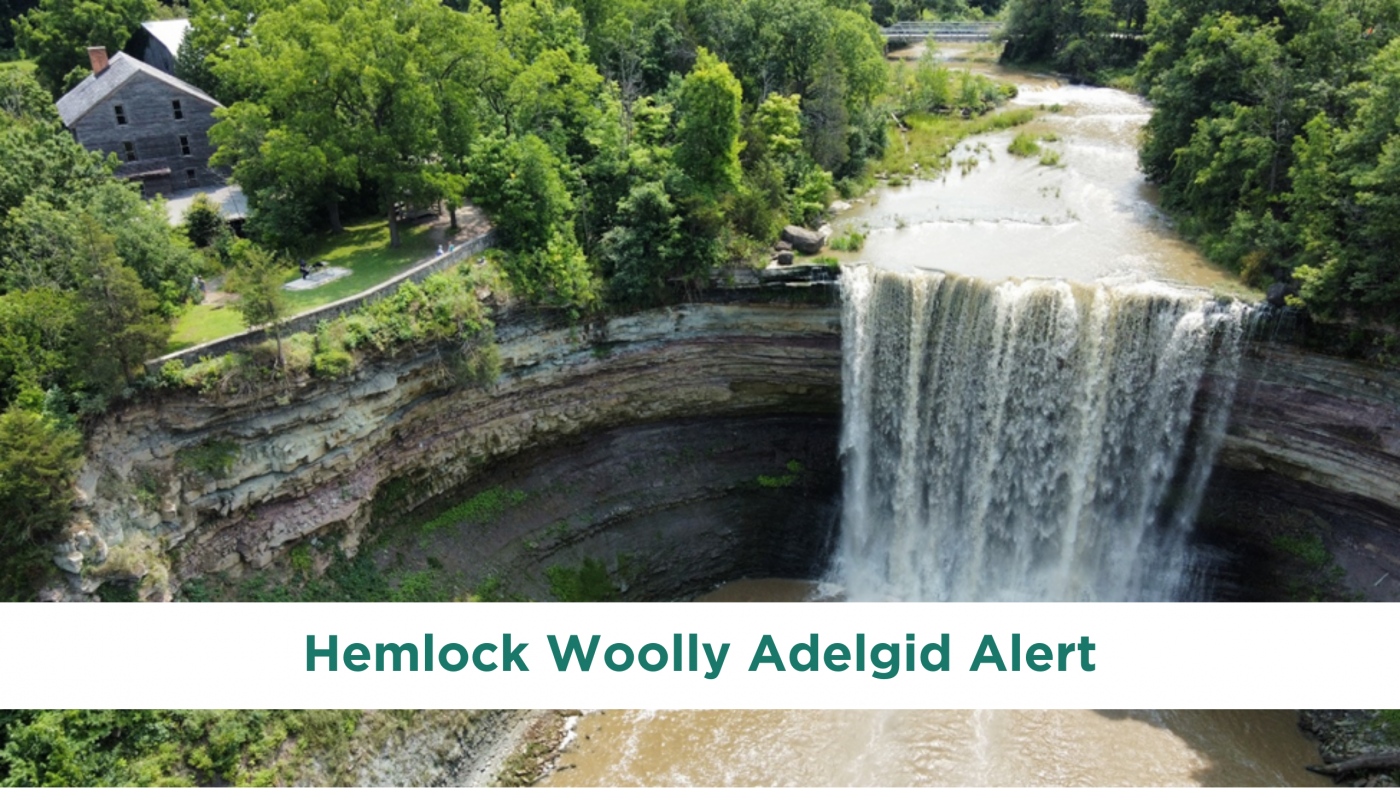Hemlock Woolly Adelgid (HWA) is an invasive forest pest that has been detected at several conservation areas including Ball's Falls, Rockway, Long Beach, and most recently, St. John's. While not harmful to humans or animals, it is destructive to eastern hemlock trees.
HWA feeding removes plant fluids and causes needle drop, twig dieback, and eventually tree mortality, sometimes in as little as four years. So, early detection is critical to help protect these trees and prevent spreading to other conservation areas. Eastern hemlock trees are a native species, and are important for wildlife habitat, shading streams and steep slopes, and providing protection from soil erosion. They can even moderate the temperature of the area on hot summer days.
Knowing the signs of a HWA infestation is important to preventing the spread. You can look for:
- Cottony, white egg sacs at the base of tree needles resembling cotton balls or clumps of snow (These are tiny! Only about 3-6 millimeters in size);
- Swelling at the twig tips;
- Twig dieback; and
- Grey foliage.
HWA can be spread through wind, wildlife, humans (clothing, boots, equipment) and the movement of infested wood products such as nursery stock, logs, firewood, and other materials. So, to help prevent the spread of HWA, visitors are asked to do the following:
- Know the signs of an HWA infestation;
- Report suspected HWA or HWA damage on EDDMapS (https://www.eddmaps.org/) or to kroyer@npca.ca if seen at a conservation area;
- Use a lint roller to remove potential crawlers from clothing and beating and/or lint roll hats and coats worn in an affected area;
- Brush off footwear worn;
- Wipe down all equipment with an ethanol-based cleaner;
- Wash all clothing worn before entering another conservation area or woodlot;
- Stay on the trails and keep pets on a leash; and
- Avoid coming into contact with hemlock trees, including its branches and needles.
To further prevent the spread of this pesky bug, please do not remove any natural material from affected conservation areas. Instead, leave nature where it is for all to enjoy.
HWA is a federally regulated invasive species, managed by the Canada Food Inspection Agency (CFIA). NPCA is working with the CFIA to determine best management practices, and is following all their recommendations. This includes following their "Notice of Quartantine" (NOQ) and "Notice of Prohibition of Movement" (POM). These notices do not require the closure or rerouting of trails, and it solely restricts the movement or removal of any hemlock species and their parts (leaves, branches, twigs, etc.) from the infested areas to prevent the spread of HWA. This means that all affected conservations areas remain open to the public as HWA is not harmful to humans or animals. Aswell, this ongoing situation is being monitored by NPCA’s internal Invasive Species Working Group who continue to ensure the community remains informed.
By staying informed and following the guidelines, everyone can play a role in helping to reduce the risk of spreading invasive species.
More information about the bug can be found on the Invasive Species Centre website.
Frequently asked questions about HWA are answered on the Canada Food Inspection Agency website here.
For a downloadable list of FAQ's please click here

